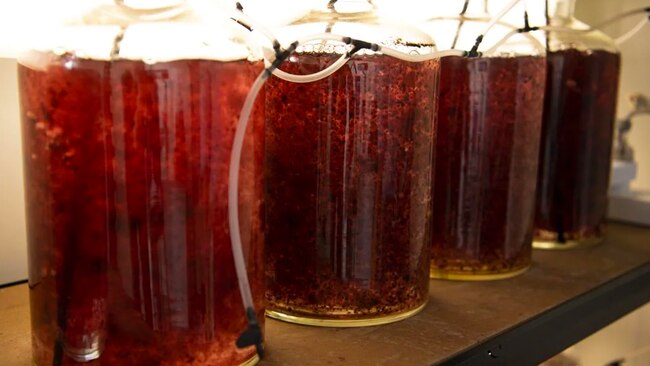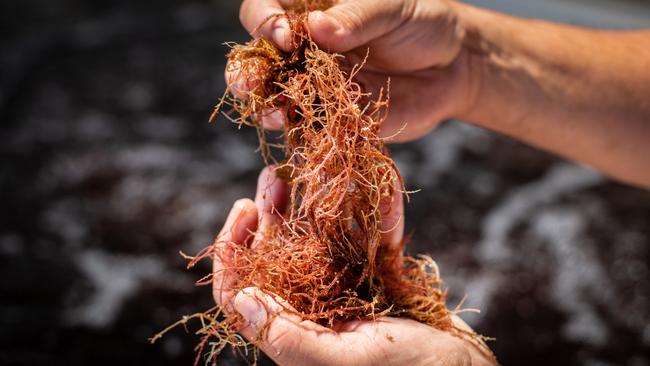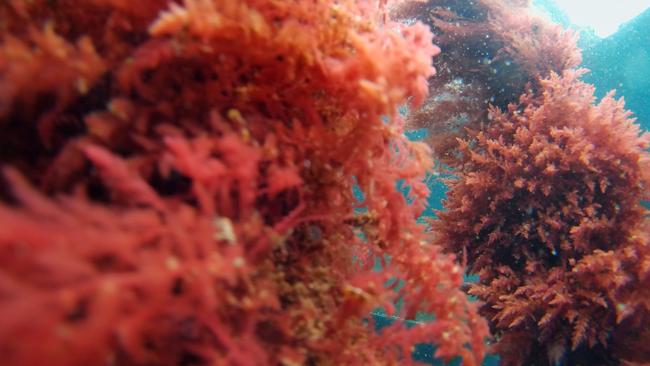Cow's seaweed diet has high steaks for the planet
Is a species of Australian seaweed the answer to the world's methane problems?

Is a species of Australian seaweed the answer to the world's methane problems?
After years of research, intensive cattle farms can purchase an Australian seaweed product that reduces methane production in cows by as much as 95%.
The first commercial sale of "asparagopsis" in Australia went to a South Australian feeding lot last month.
So, is this really the answer to reducing toxic, methane-filled cow farts?
(It might be a better solution than adding veganism into the Australian school curriculum?)
Why we are looking at cow burps
👉 11% of Australia's total greenhouse gas emissions come from cows and sheep
👉 90% of cow methane comes from burps
👉 10% of cow methane comes from farts
CSIRO research scientist Dr Rob Kinley told The Australian earlier this year: "No other seaweed, and no chemicals, have this effect on methane production.
From a greenhouse gas perspective one cow is the equivalent of one car, so that if you feed 100 million cattle with this seaweed it’s like taking 100 million petrol-burning cars off the road.
How was this stumbled upon?

🧑🌾 Almost 20 years ago, a Canadian cattle farmer noticed his seaweed-feeding cattle, who lived by the ocean, were healthier than his other cows.
🧑🔬 So scientists began testing it and found that seaweed could reduce methane production in cow stomachs.
🌊 One red seaweed called asparagopsis taxiformis came back from the lab with the proud result of reducing methane production in livestock by 99%, even if it only makes up 2% of the animals' diet
🧪 Australian researchers (from CSIRO, Meat and Livestock Australia, and James Cook University) began developing the asparagopsis feed additive about four years ago. Investors like billionaire businessman Andrew "Twiggy Forrest" and Woolworths have backed the commercialisation of the seaweed.
What is asparagopsis and how does it work?
🤿 This red seaweed is native to Australia and New Zealand.
🤿 Asparagopsis creates a chemical compound that alters certain enzymes used by the gut to produce methane gas during digestion.
Fashion designer turned asparagopsis cultivator Sam Elsom of Sea Forest told The Australian:
“Australia is one of the most biodiverse places on the planet and there’s a tremendous opportunity to better understand the life of seaweed and its many uses. A lot of seaweed has antifungal and antibacterial properties. Aboriginal people used to use seaweed to help heal wounds, and now, centuries later, Deakin University is looking at ways of using it in wound dressing.
“We know so little about something that exists in thousands of species and can be found everywhere in the ocean. One of the most remarkable species of seaweed can be found right here,” Sea Forest CEO Elsom said.

The commercial sale and what it means
CH4 Global sold their first commercial batch of asparagopsis to South Australian feedlot CirPro last month. They are one of three companies in Australia licensed to do so (alongside Sea Forest and SeaStock).
A feedlot is a yarded area where cows go after being raised in pastures so they can prepare for slaughter. They are fed grains, so it's easy to add a little seaweed to their diet.
CH4 will be scaling up from here. They want to reach 150 million cattle (which is about 10% of the world's total) within five years.
CirPro said they would sell their beef as a premium product for environmentally-conscious buyers.
Where to from here?
If it's commerical capability is proven to reduce methane emissions on a large scale, the international market led by Australian producers, could be worth billions each year.
"Now we are seeing a new industry with the capability to support local communities and the creation of jobs while working together to make a meaningful impact on methane emissions from livestock,” FutureFeed senior adviser Cassandra Kelly said.
Also, although it's easy to add asparagopsis to grain in feedlots, producers are working on ways to get the additive to grass-fed cows in pastures. There are issues here around controlling the method of feeding and the amount of seaweed the livestock consume. Yet, this would open up the product to many more farmers.


